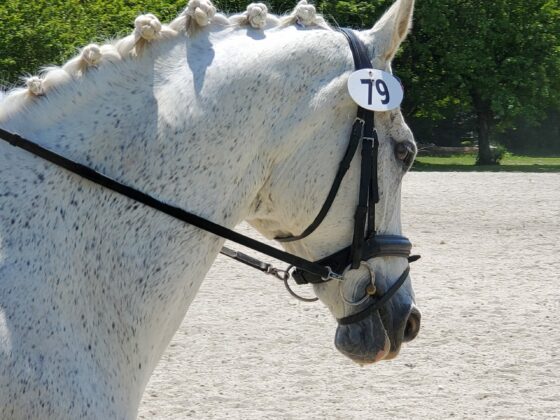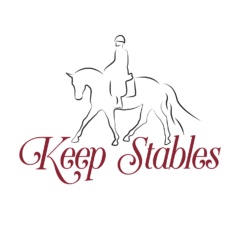Upcoming Events in the area!
We are adding events to our 2024 calendar monthly, please keep checking that page as it updates!
Events being added to the calendar include :
- Educational opportunities on the farm.
- Local for Dressage and Working Equitation Schooling Shows.
- Recognized Working Equitation Shows hosted by regional AO’s.
- Fix-a-tests and Coached PlayDays on a full course of regulation obstacles hosted at beautiful Oak Spring Equestrian, including opportunities to explore a course and learn about each obstacle on foot without a horse. Just 5 minutes down the road from us!
- Virtual WE and Trail Obstacle Series during the winter months to keep us inspired and engaged.
- Introduction to the cattle phase of WE.
- Group play days at the Double C Trail course.
- Cross Country outings on local courses.
- Group trail rides on farm and pathways around the region.
For more information and to sign up, please email keepstables@yahoo.com
Follow Keep Stables on Facebook for the latest news, photos, and events!
Keep Stables is located in Woodbine, MD which is about 45 minutes north of DC, 30 minutes west of Baltimore MD, and 30 minutes east of Frederick Maryland.
Our farm has a full complement of Ease of Handling equipment, and is an easement to the Patuxent State Park, offering endless cross training opportunities!
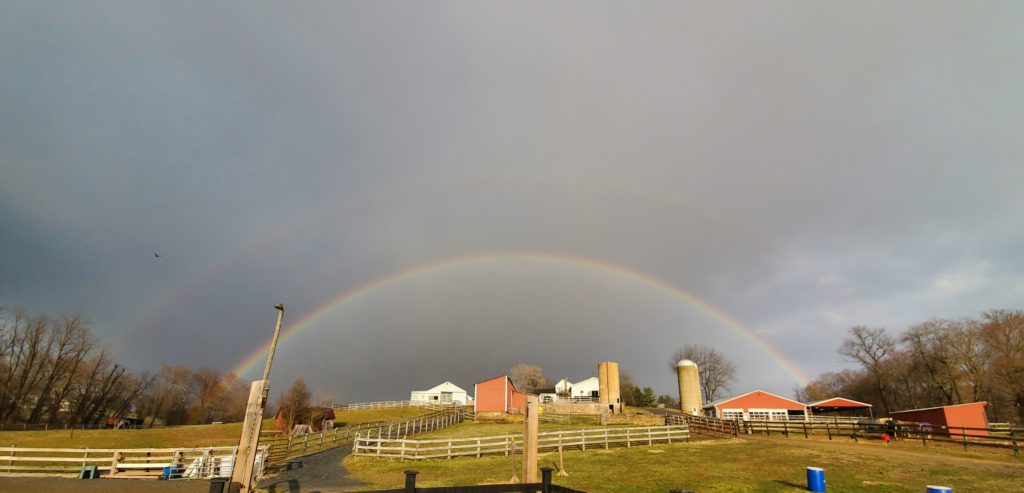
Regional Working Equitation Clinics and Training
Interested in holding a Working Equitation or Dressage clinic, Fix A Test or schooling show in your area? Our head trainer Holly Linz travels the region for all of the above and is happy to assist you with putting together an event at your facility!
Please email us for information on hosting a Working Equitation clinic at your farm or ours! We welcome new students and horses for training, and regularly offer schooling days for outside riders.
Our upcoming events calendar can be found in the menu bar on the left side of our site.
Who can we assist with Working Equitation Training?
- Complete beginner – introduction to Working Equitation and practice sessions with obstacles
- Intro, Novice, and Intermediate level instruction for Ease of Handling, Speed practice and troubleshooting specific obstacles
- Dressage discussion and practice WE-specific dressage movements
- Lessons on seasoned WE horses also available
If you would like to schedule a lesson, please contact Holly Linz at keepstables@yahoo.com. Holly offers lessons several days a week at KeepStables and travels locally to give you a great introduction to the sport! There is great benefit from cross training in WE for horse and rider, especially if your goal is building a better relationship with your equine partner.
We have a great group of riders at the farm regularly practicing Intro, Novice, and Intermediate level Working Equitation. Come have some fun with us!
Keep Stable works in partnership with local USAWE Affiliate Organizations to provide great Working Equation opportunities and events in the area!
We have a very active group of Working Equitation riders schooling Intro through intermediate levels who are very supportive and welcoming to those new to the sport. We partner with local farm Oak Spring Equestrian LLC to offer a wide variety of educational and competitive opportunities for those who are new to the sport and in search of some guidance, as well as the seasoned WE enthusiast. Check out Oak Spring comprehensive calendar of events HERE!
What is Working Equitation?
Working Equitation is a rapidly growing sport in the US that is amateur friendly and lots of fun! Its origins are in Portugal and Spain, and has spread worldwide over the past 30 years. The essence of Working Equitation carries over the working nature of centuries of life on working farms into modern horsemanship.
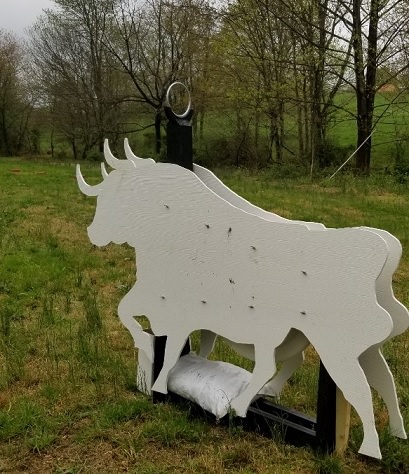
Style is important in Working Equitation – riders are allowed to choose their own style of dress and tack, and are not required to wear helmets. Examples include: Formal English, Western USA, and Spanish or Portuguese tack.
A wide variety of tack and bits are allowed such as hackamores, snaffles, curb bits, and bitless bridles, which makes the sport welcoming to a wider range of riders. Riders are expected to stay consistent with their style by using the same dress and tack for all phases of the Working Equitation show.
Working Equitation has four phases:
Working Dressage
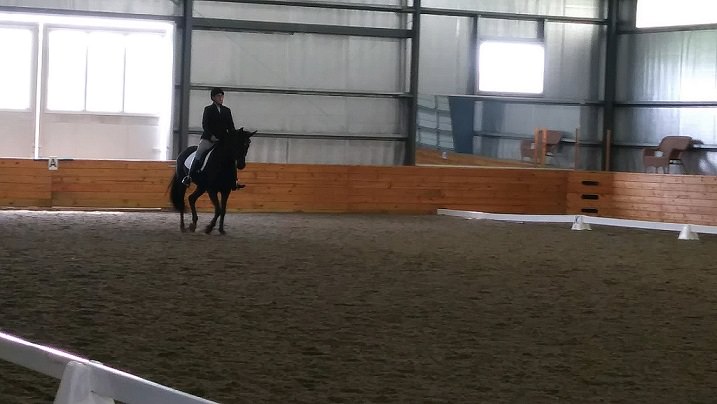
Keep Stables amateur rider Amira and horse Sonnet performing WE Novice A Dressage Test, which is similar in difficulty to a USEF Training Level test
Very similar to the USAE / USDF Dressage Tests, Working Equitation Dressage tests are performed in a 20×40 meter dressage arena and follow the same basic movements as English and Western dressage tests. For example, Intro dressage has walk-trot figures such as 20 meter circles. Novice dressage includes a short rein-back and turn on the haunches. Intermediate and higher tests include collection for lateral movements and flying changes.
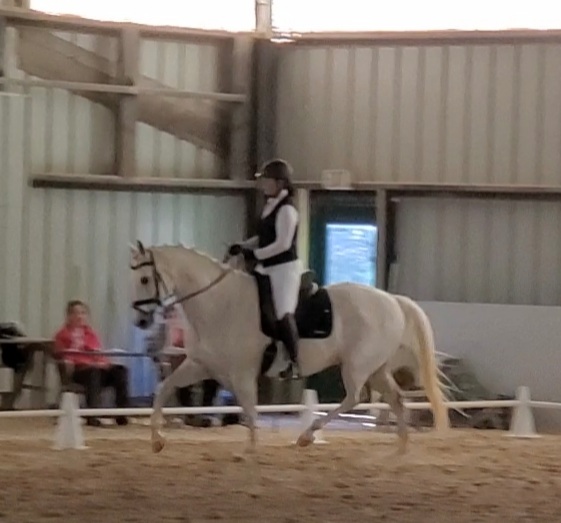
What is the Working Dressage phase? It is a test to show the rhythm and regularity of the natural gaits and the precision of the horse to prepare for the other 3 phases. These are achieved through systematic gymnastic movements which are judged individually on a scale of 0 -10. Working Equitation Dressage aims to demonstrates a horse’s natural athletic ability, willingness to work in lightness with ultimate adjustability.
It differs from Competitive Dressage as there is not an emphasis on extension work and the trot is primarily a developing gait, as it appears less and less in test as the levels advance, focusing more on the walk and canter. Its all about developing maximum adjustability!
Working Dressage creates an opportunity to chain together the movements usually practiced in a work situation with cattle. Working Dressage requires that a horse show regularity and purity of gaits performed in horizontal balance who is then able to continue on to perform obstacles, work cattle and remain obedient at fast speeds.
Ease of Handling
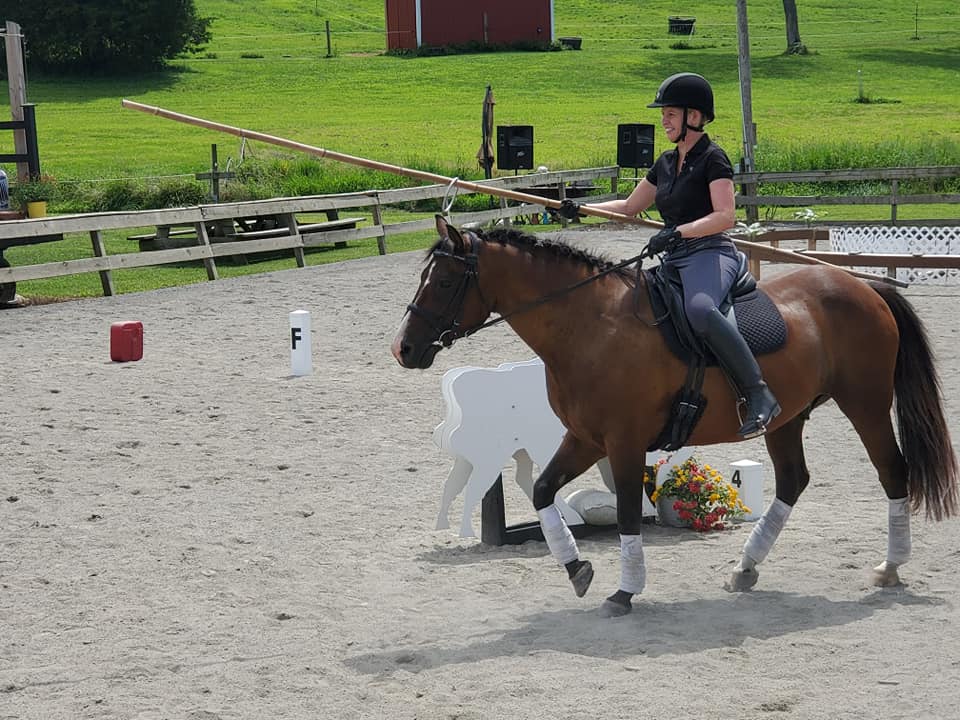
Bull obstacle – use the lance to spear the ring while walking, trotting, or cantering past (depending on level). You only get one pass: if you miss, continue on and return your lance to the holder.
This phase is most similar to a Trail Competition, but is less about surviving and more about showing that you and your horse are working together as a team. The trial working horse would be expected to perform during a day on the ranch.
You are judged by how efficiently you and your horse progress through the obstacles. Does your horse wait calmly while you manipulate the gate? Is your figure-8 around the barrels round and symmetrical? Does your horse willingly walk over the bridge or do they try to race across?
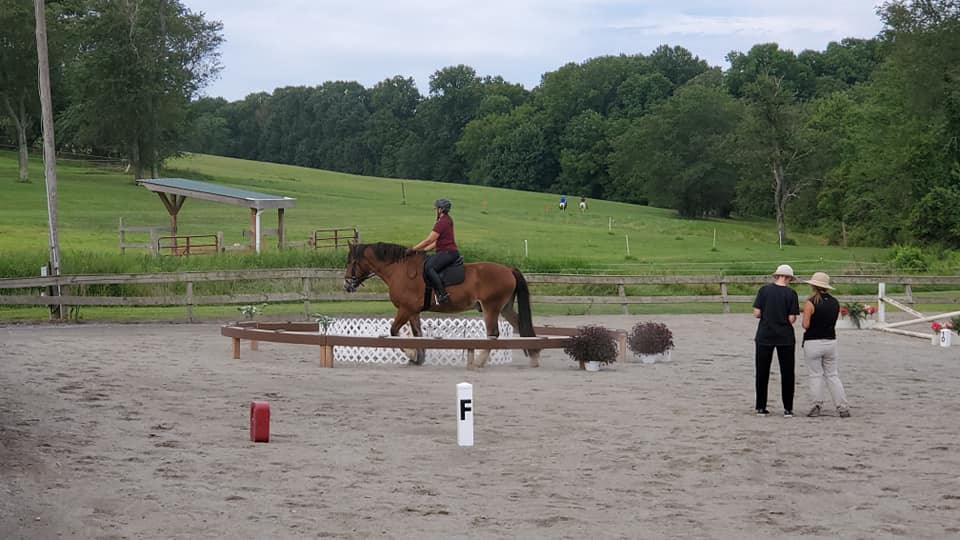
This phase which in other countries is also called ‘Manability’, ‘EOH’ ‘Style phase’ ‘Obstacle test’ or ‘Handiness test’ is an obstacle type event in which horse and rider must overcome elements which symbolize the difficulties natural and not, relative to those likely to be encountered in the field (i.e. crossing bridges, passing through gateways, side passing, etc).
The manner in which the obstacle is executed – focusing on agility, submission, working attitude, as well as ease of movement and of handling – is scored by a judge the same way as the Working Dressage test on a scale of 0-10 for each element.
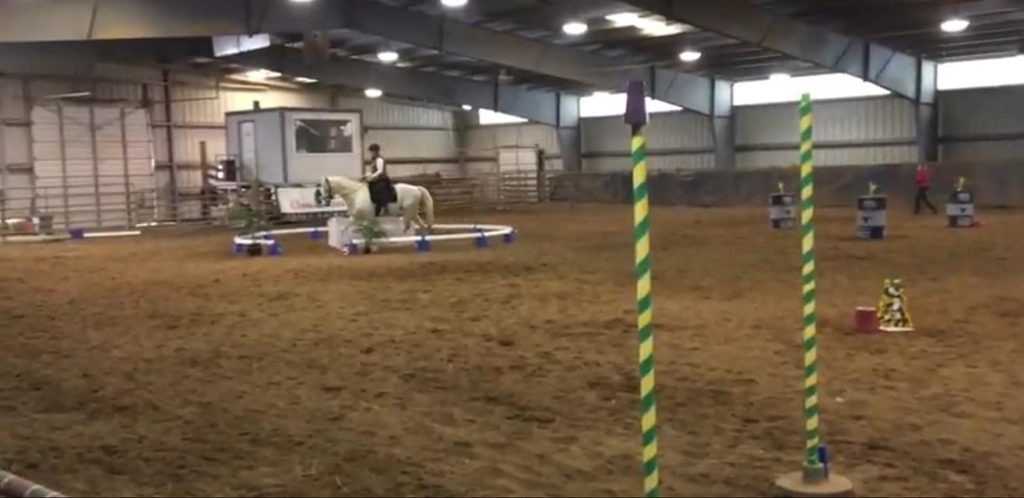
Speed Trial
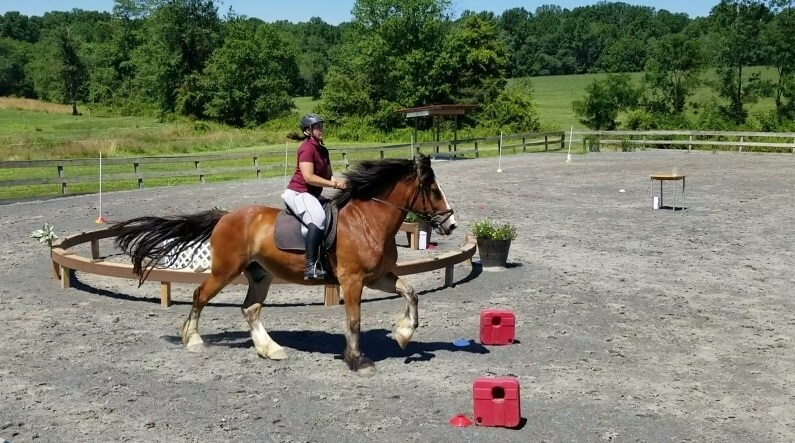
The Speed Trial is a timed event, which tests the horse riders ultimate manability and measured in an objective way by the use of a stop watch or timer. The goal is to promote the horses which are most manageable. The individual scores are based on elapsed time through the obstacles and time penalties for errors.
The penalties applied for the mistakes must be such as to prevent any attempt to promote just the top speed, and not the handiness which would be contrary to the spirit of the discipline.
It is the most exciting element of Working Equitation competitions, bringing out the most joy in horses and riders!
Cattle Trial

What is the Cattle Handling phase? The Cattle handling phase is the essence of the sport of Working Equitation because it is the culmination of skills from the three other phases of WE. It is currently NOT a required trial, and only allowed for Levels 2 and above. Level 1 does NOT participate in the cattle trail due to the probability of canter being required.
This is a timed test aimed at proving the working relationship between a horse and rider pair.
The basic requirements are: 1.) A calm approach to the cattle. 2.) The isolation and the sorting of a single cow with respect to the integrity of the herd. 3.) The conduct of the cattle sorted efficiently and accurately. 4.) Teamwork.
The event typically consists of 4 rider teams in the arena together, each being called on individually to separate a particular cow from the herd. As a team they can assist the called rider to move the called cow into a separate pen at the opposite end of the arena, while at least one team member secures the rest of the herd at the starting/ holding end of the arena. It is similar to the American sports of Ranch Sorting.
Pictures from some of our past Working Equitation clinics!
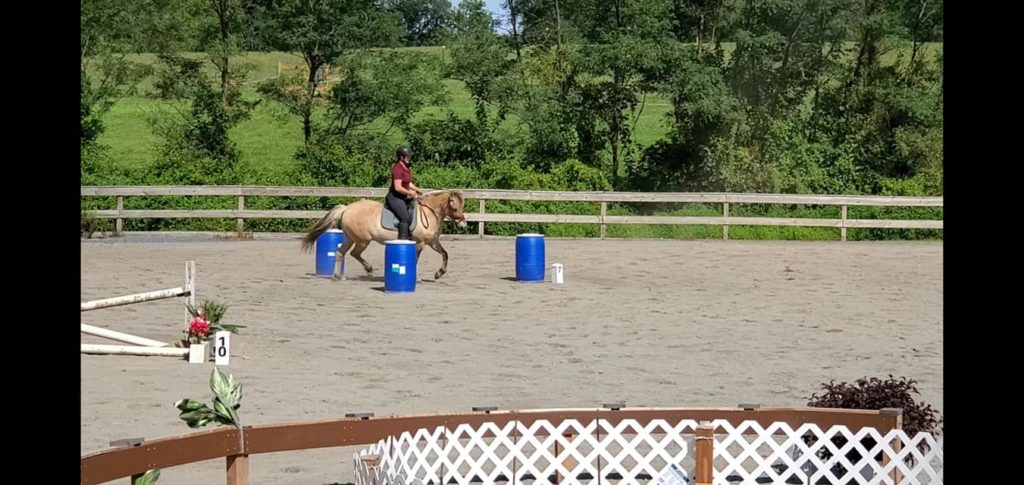
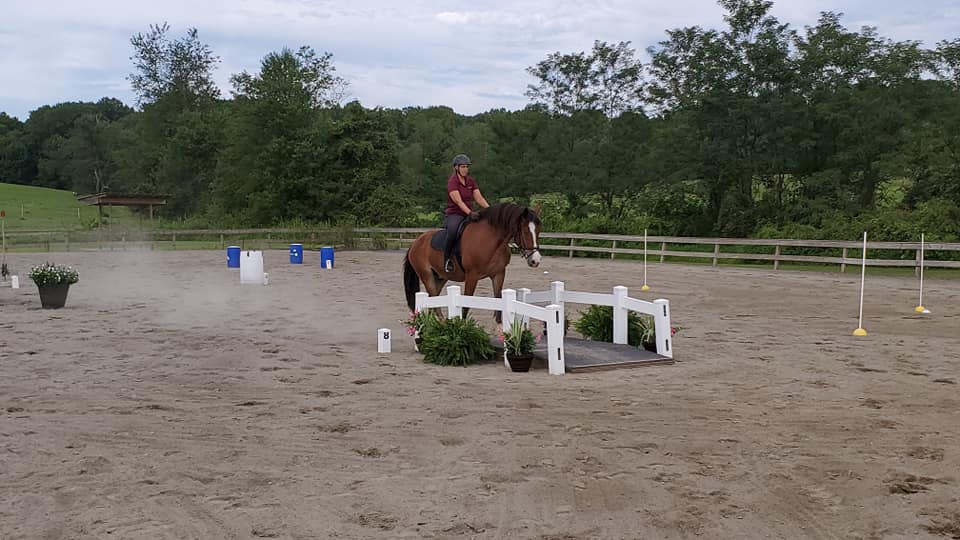
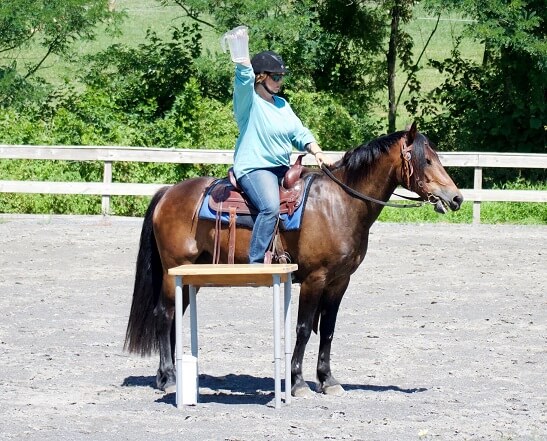
Keep Stables provides a beautiful, custom built Ease of Handling obstacle course that is always competition regulation and ready!
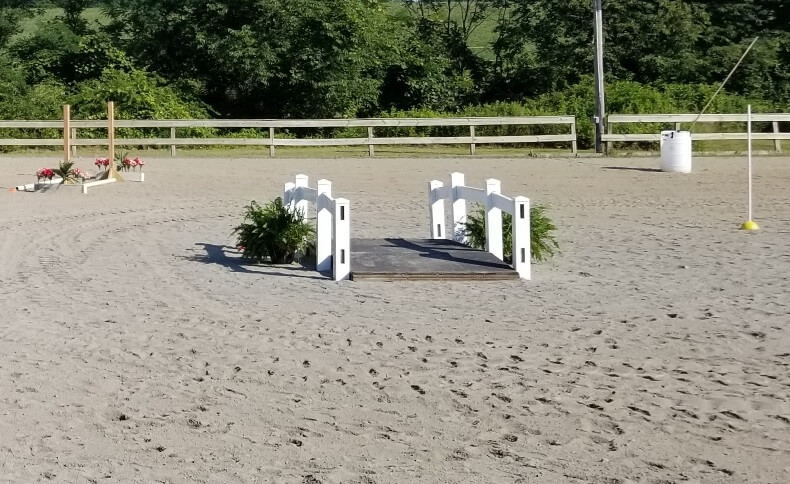
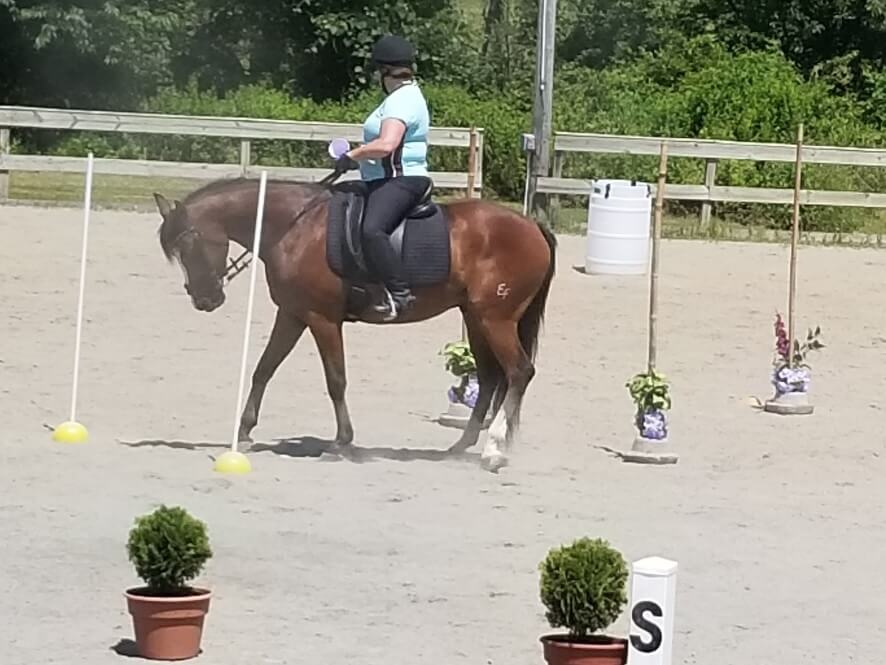
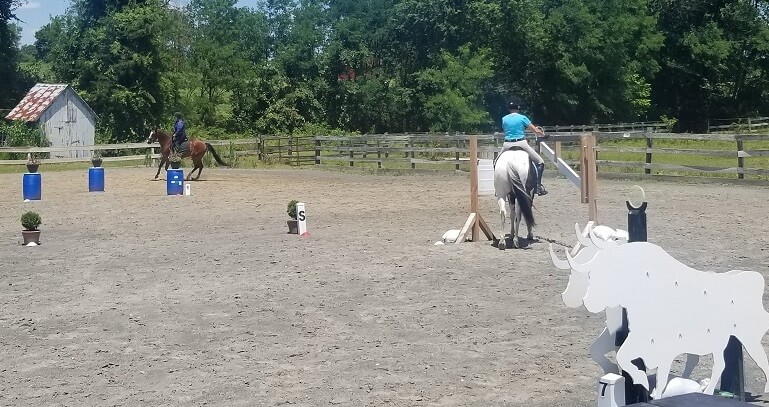
The Livestock Pen
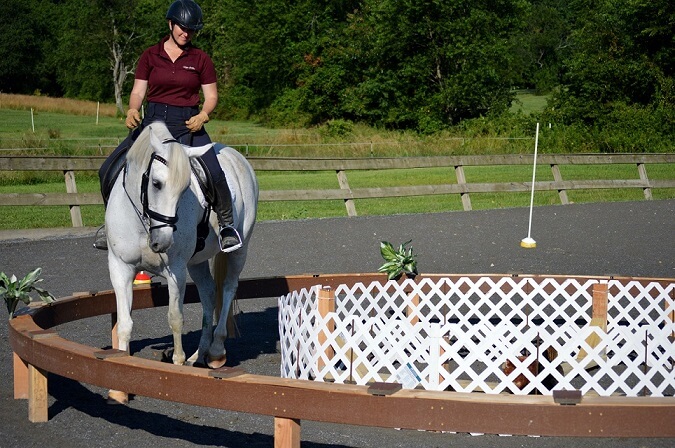
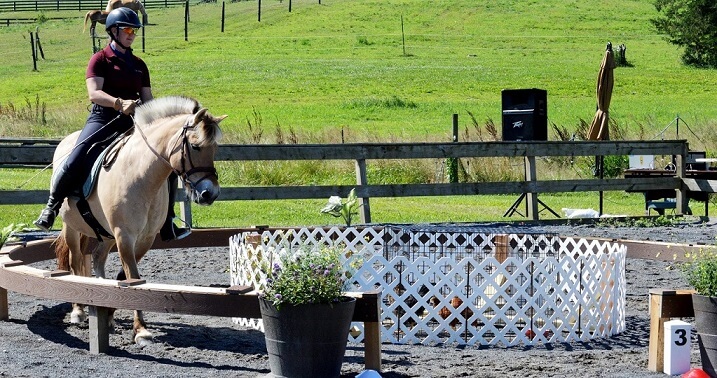
Tips for the Bull line in Working Equitation
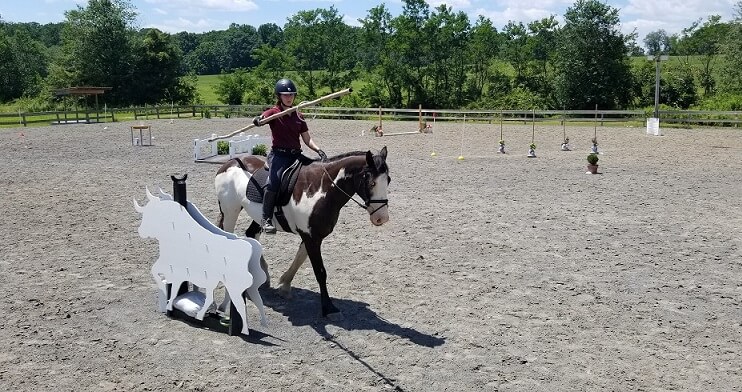
The elements of the bull line should be introduced slowly to horses. This means doing everything from the ground until the horse really understands and accepts the concept. In particular, rehearse all the scary conditions from the ground to gain your horses confidence before performing the obstacle mounted.
- Carrying the Garrocha can be scary to a horse because it moves near their head, following them as they move, and might touch or bonk the horse if the rider loses their balance.
- Retrieving the Garrocha out of the barrel and returning it to the barrel makes noises the horse must get used to.
- If you successfully catch the ring, it will make a rattling noise as it travels down the Garrocha. Horses can be alarmed when the ring moves toward them (on the Garrocha) and time must be taken to get the horse used to the ring traveling along it.
- Riders must spend time learning to navigate their horse successfully with one hand while maneuvering the Garrocha with the other hand in order to perform this obstacle smoothly.
When moving through other obstacles, riders may balance the Garrocha on their shoulder so that it doesn’t get caught on anything while navigating other obstacles.
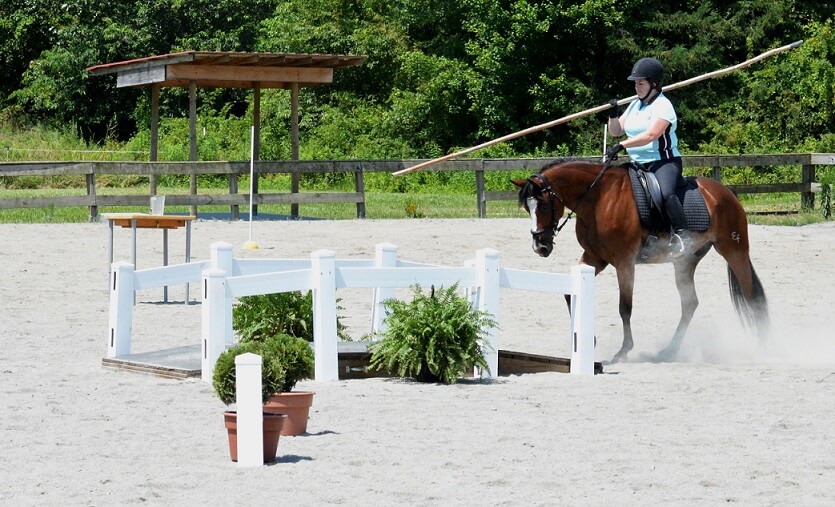
Kim safely carrying the Garrocha on her shoulder as she goes over the bridge.
When you spear the ring, it is important to catch it with your thumb as it travels down the Garrocha. If you don’t catch it with your thumb, the ring can go around your hand and the lance and lock them together, making it difficult to deposit the Garrocha back into the barrel.
When you place the Garrocha back into the barrel, you should be ‘laying it down’ not jamming it in. This improves your score and makes sure the Garrocha stays put. If it falls out you must get it and put it back in upright!
Jumps in Working Equitation
The jump obstacle in Working Equitation is meant to be a ‘working horse’ test. The intent is that a horse can jump a small hay bale or log on the trail. No huge jumps!
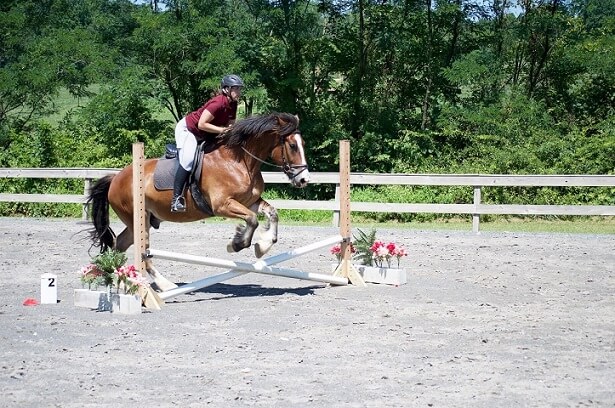
National Championship Speed Trial Video (MUST WATCH!!)
This video is just fun to watch, and shows what Master’s level Working Equitation looks like. It is the “speed trial” phase, which is scored by how long it takes to complete, so the rider is moving fast!
Do you have an Iberian horse, such as Andalusian or Lusitano?
These breeds are naturals at Dressage and Working Equitation due to their workman like temperament, natural talent for collection, and compact physique. Holly Linz has experience working with a wide variety of Iberian horses up the levels. Do you have an Iberian you would love to do more with, or have you always wanted one of your own? Contact KeepStables for assistance making your dreams a reality!
What does Dressage have to do with WE?
Being educated in English / Western Dressage gives a major advantage to riders who want to do Working Equitation.
- Dressage teaches you and your horse the balance, collection, and adjustability necessary to perform well on an Ease of Handling or Speed course. For example, an upper level WE horse performing the figure-eight would be doing a collected and upright canter with flying changes for each change in direction around the obstacle. These are dressage skills!
- Dressage by itself is an entire 1/3 of the score for most Working Equitation shows! No obstacles – just precise figures and movements in a small dressage arena in harmony with your horse.
Because Keep Stables riders already specialize in dressage with Holly Linz as our trainer, we find that Working Equitation is a natural next step to progress in our skills and have fun with our horses! It helps to keep the horse and riders mind fresh, and have new way to approach training goals and challenges.
